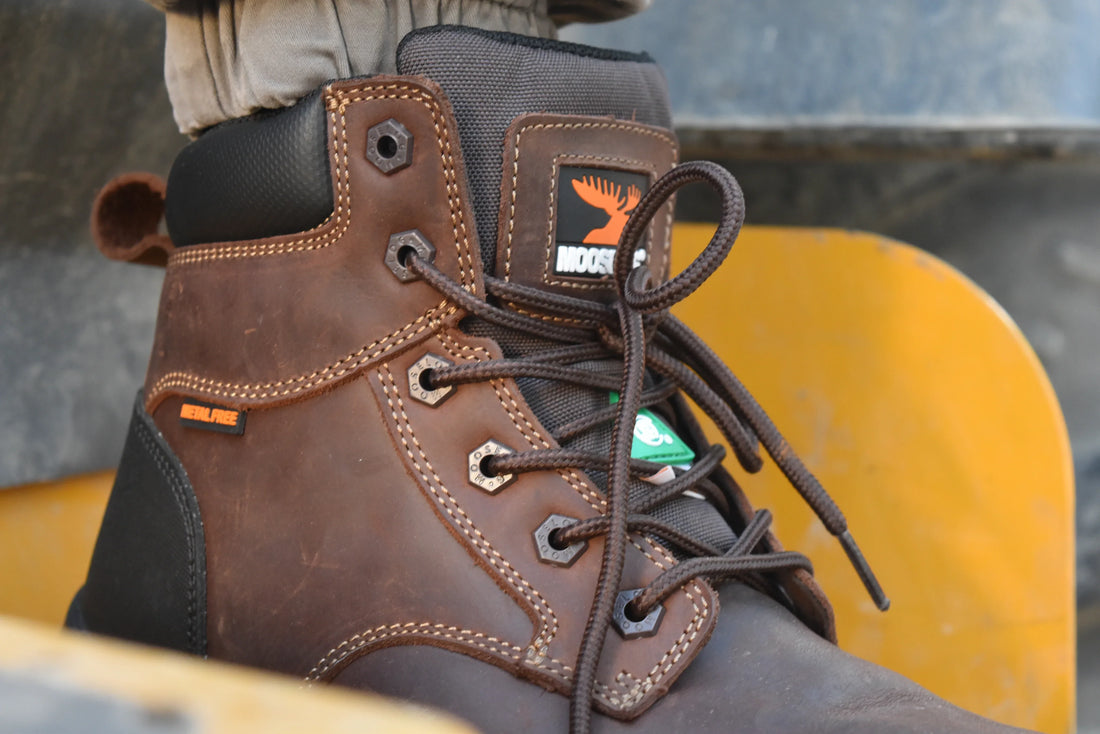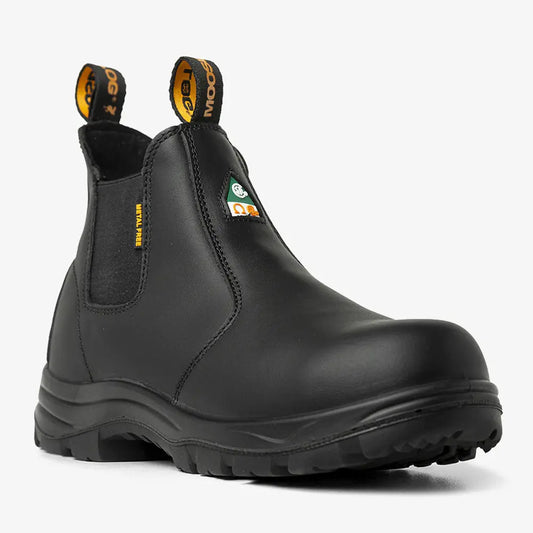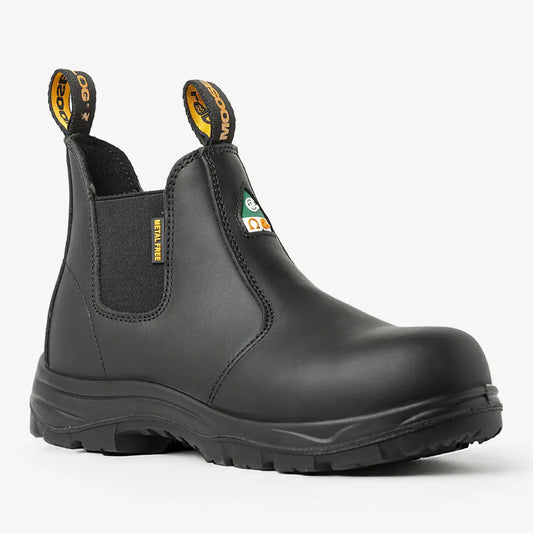
Full Grain Leather Safety Boots: Strength, Lifespan, and Care Guide
Picture this: you’re stomping through a muddy construction site, tools clanging, sun beating down, and your boots are taking a beating but holding strong. That’s the magic of full grain leather. It's the toughest, most unapologetic material you can strap to your feet.
What Is Full Grain Leather?
Full grain leather is made from the outermost layer of the hide, the part closest to the animal’s skin. Unlike split or corrected leathers, it keeps its natural fibre structure intact. The result is a material that’s denser, stronger, and more resistant to abrasion. Because it hasn’t been sanded or buffed, every mark and pore remains visible. This natural surface is what gives full grain leather both its strength and its ability to develop a rich patina over time.
Full grain leather is also prized for its natural sustainability when responsibly sourced. The Leather Working Group sets global environmental standards for tanneries and leather production.
Many safety boot manufacturers choose it for environments where protection and longevity matter most: construction, warehousing, utilities, and heavy industry.

Is Full Grain Leather Good for Work Boots?
Yes. For long-term jobsite wear, full grain leather is one of the best materials you can choose. It’s the kind of material that ages like a fine whiskey. Here’s why it’s the go-to for folks in construction, warehousing, or any job that demands boots
Key advantages:
- Durability: Resists cuts, scrapes, and daily abrasion better than top grain or split leather.
- Breathability: Natural fibres allow airflow while keeping structure.
- Protection: Works well with CSA and ASTM-rated toe caps and puncture-resistant plates.
- Shape retention: Moulds to your feet over time without collapsing.
Potential drawbacks:
- Heavier than synthetic alternatives.
- Stiffer out of the box, meaning a longer break-in period.
- Requires periodic conditioning to prevent drying and cracking.
For workers who value lifespan and rugged protection over lightweight feel, full grain leather remains the preferred choice.
Related Blog: How Long Do CSA and ASTM Certified Boots Really Last?
How Long Will Full Grain Leather Boots Last?
Longevity depends on how often you wear them, what conditions they face, and how you maintain them.
| Use Case | Estimated Lifespan |
|---|---|
| Light indoor / warehouse work | 3–5 years |
| Daily outdoor construction | 1.5–3 years |
| Harsh chemical or wet environments | 1–2 years |
You can extend lifespan through consistent care:
- Wipe off dust and salt after each use.
- Apply leather conditioner every few months.
- Store in a dry, ventilated area away from direct heat.
- Replace insoles when compacted to maintain support.
Well-maintained full grain boots can easily outlast synthetic or split-leather models by several seasons.
How to Tell If Boots Are Full Grain Leather

Because many brands use marketing terms loosely, it helps to know what to look for.
- Surface texture: Genuine full grain leather has natural markings and subtle grain variation. It won’t look perfectly uniform.
- Feel: It’s firm and slightly waxy rather than smooth and plasticky.
- Edges: When cut, the edge should appear dense, not fuzzy or fibrous.
- Smell: Real leather has a distinct organic scent that synthetics can’t replicate.
- Specs: Check product descriptions. “Full grain” should appear in writing. If you see “genuine leather” or “bonded leather,” it’s not the same quality.
If you’re buying in person, flex the material. True full grain bends without cracking and slowly returns to shape.
How Long to Break In Full Grain Leather Boots
Because it’s thicker and denser, full grain leather takes longer to soften and adapt to your feet.
Typical break-in period:
- Light work or indoor wear: about one week of part-time use.
- Heavy work or thick leather: two to four weeks of gradual wear.
Tips for a smoother break-in:
- Start with short sessions indoors.
- Wear thick or double socks to reduce friction.
- Use a leather conditioner before first wear.
- Flex the boots gently by hand to loosen stress points.
- Avoid soaking or heating the leather as that can damage the structure.
Once broken in, full grain leather becomes noticeably more comfortable and continues to adapt with each wear.
Related Blog: How to Break In Your Safety Shoes Without the Pain
How Full Grain Leather Compares to Other Materials
| Material | Strength | Comfort | Water Resistance | Lifespan | Typical Use |
|---|---|---|---|---|---|
| Full Grain Leather | Excellent | Improves with time | Moderate (needs treatment) | 3–5 yrs | Heavy-duty safety boots |
| Top Grain Leather | Good | Softer initially | Moderate | 2–3 yrs | Mid-range workwear |
| Split Leather | Fair | Soft but weak | Low | 1–2 yrs | Casual boots |
| Synthetic | Low | Light, flexible | High | 1–2 yrs | Budget footwear |
Full grain leather scores highest for durability and repair potential, making it the top material for safety boots built to last.
FAQ
Is full grain leather good for work boots?
Yes. It’s the toughest and most protective leather type, ideal for demanding work environments.
How long will full grain leather boots last?
With care, between two and five years, depending on how often you wear them and the job conditions.
How to tell if boots are full grain leather?
Look for visible natural grain, firm texture, and clear “full grain” labelling. Avoid perfectly smooth or glossy finishes.
How long to break in full grain leather boots?
Usually one to four weeks, depending on the thickness and your wearing schedule.
Final Thoughts
Full grain leather boots are for workers who don’t mess around. They’re pricier, sure, but they’re an investment in resilience and character. These boots take a beating, age like a legend, and keep your feet safe in the gnarliest environments. If you’re picking safety footwear for the long haul check out MooseLog CSA & ASTM Dual Certified Boots Collection where every boot is made with full grain leather.






